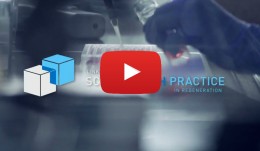Free content
-
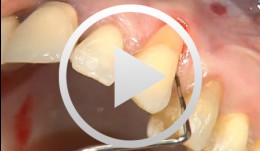

Covering a Recession with a Soft Tissue Transplant
Heinz, Bernd / Jepsen, SörenObjectives: Use of a soft tissue graft for recession coverage at tooth 23 and for gingival augmentation. Content: 1. Incision around tooth 23, intra-sulcular preparation, mobilization of coronal sliding flap, and pre-flap preparation. 2. Root smoothing, reduction of ground cavity with diamond burs from Perioset system. 3. Preparation and harvesting of connective tissue flap from palate, Emdogain application, and wound closure. 4. Placement of interrupted interdental sutures for fixation of connective tissue flap. -


Short and narrow implants, how far can we go?
Christoph Hämmerle, José NartIn this webinar moderated by Prof Ronald Jung and Dr. Adrián Guerrero the expert presenters Prof. Christoph Hämmerle and Dr. José Nart discuss about the importance and benefits of using short and narrow implants. -
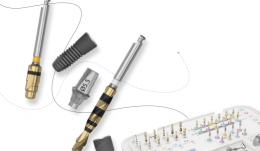

-
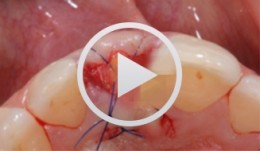

Soft Tissue Management in the Aesthetic Zone
Daniel ThomaExpert presenter PD Dr. Daniel Thoma is a Head of Academic Unit at the Clinic for Fixed and Removable Prosthodontics and Dental Material Sciences, University of Zurich, Switzerland. Long-term successful outcomes with implant therapy are based on a number of parameters. Among these, the critical assessment of the peri-implant soft tissues and subsequent therapeutical interventions are considered key factors. -
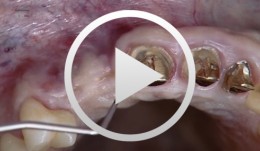

Implantation with Simultaneous Augmentation
Grunder, UeliProcedure: - Case evaluation - Incision technique - Implant placement - Membrane adjustment and fixation - Introduction of replacement material - Flap mobilization - Suture technique Contents: Implantation was desired for replacement of a missing upper canine tooth and the adjacent lateral incisor tooth. The initial case evaluation revealed a relatively narrow gap between these two teeth in addition to extensive hard and soft-tissue defects. We selected an incision technique that made it possible to do the augmentation work yet subsequently achieve a tension-free flap closure. Since the bony defect was large while the available space was limited, we had to go for the best possible compromise in regard to implant insertion. After the implants had been inserted, augmentation was carried out using a non-absorbable, titanium-reinforced membrane, bone replacement material, and an absorbable membrane. Extreme flap mobilization was needed to achieve flap closure. An optimal suture technique was used to complete the surgery. -
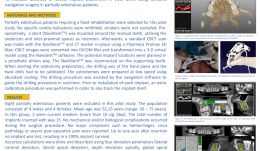

REAL-TIME NAVIGATION: THE BEGINNING OF A NEW ERA IN GUIDED IMPLANT SURGERY
Objectives: To demonstrate that dynamic guided surgery is as predictable as conventional surgery. Methods: Partially edentulous patients requiring a fixed rehabilitation were selected for this pilot study. No specific contraindications were established, and smokers were not excluded. An impression was taken pre-operatively using an irreversible hydrocolloid (Cavex CA37®) to fabricate a diagnostic cast for moulding the surgical stent (NaviStent®). Afterwards, a standard cone-beam CT (CBCT) scan was made with the NaviStent® in place using a Planmeca Promax 3-D Max®. Images were converted into DICOM files and transformed into a 3-D virtual model using the Navident® software. The potential implant locations were planned in a prosthesis-driven way. For preparing the osteotomy, the drilling axis of the handpiece and the twist drills were calibrated. The osteotomies were prepared at low speed using a high level of cooling. The navigation software guided the drilling procedure in real time. Before installing implants, an extra calibration procedure was performed for tracking the implant. The aim of this pilot study was to determine the clinical outcome up to 12 months post-operatively for implants installed using the Navident® guided surgery system. Results: Partially edentulous men (n = 6) and women (n = 7) were included in this pilot study (mean age 52.15 years; range 20–75). Out of these 13 patients, two were current smokers of more than 10 cigarettes per day. Twenty implants were inserted. No mechanical or biological complications occurred during the surgical procedure, and no major complaints were reported, such as hemorrhage, sinus pathology or severe post-operative pain. No implants were lost up to 1 year after insertion, resulting in 100% implant survival. Conclusions: Based on the results of this pilot study, real-time navigation is a promising technique. However, there is not yet enough evidence to show that the method is as safe and predictable as conventional implant surgery. -
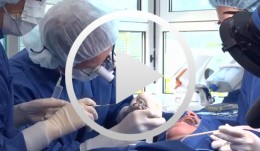

-
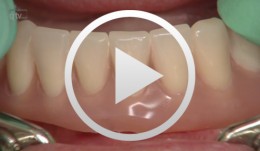

Fiberglass frameworks in removable prosthodontics
Bücking, Wolfram -
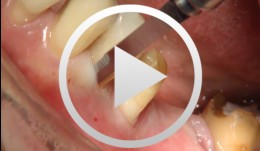

Periodontal Preserve Therapy (Examples)
Clotten, StefanContent: - Periodontal maintenance therapy for teeth 34 and 35, including the regeneration of a bone defect using bone replacement material, collagen membrane and sutures. - Curettage for treatment of periodontal pockets. - Treatment of gingival pressure sores caused by tight-fitting orthodontic apparatus. - Incision of buccal attachment to relieve gingival pressure for elimination of gingival recession. -
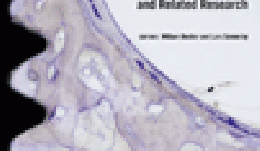

-
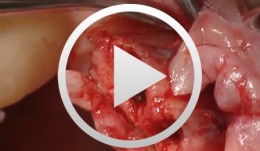

Bone Spreading, Bone Condensing
Streckbein, RolandContent: Surgical flap creation and elevation; Use of drill template for exact determination of implant position; Implant site creation; Site preparation / tapping; Bone compaction; Insertion of the implants; Impression-taking; Wound closure; Later implant insertion; Dental lab work; Creating the model with laboratory implants; Shaping the bar frame; Adapting the laser welded frame to the model; Manufacturing the tooth replacement, Fitting the bar into the tooth replacement; Finishing work. -
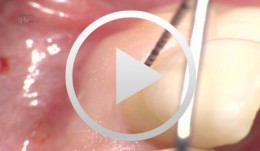

-
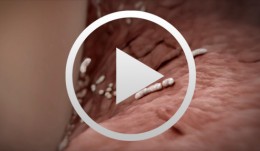

Cell-to-Cell Communication - Inflammatory Reactions
Stadlinger, Bernd / Terheyden, HendrikVisualizing the invisible while experiencing a fascination with science is the great challenge that Cell-to-Cell Communication, representing an all-new genre, has set out to meet. A spectacularly sophisticated computer animation in HD quality depicts the highly complex processes of intercellular interaction during an inflammatory periodontal reaction complete with the messenger molecules implicated. The various cell types constitute the main cast of the film, using a finely tuned communication process in their quest to destroy the bacterial invaders, with messenger molecules as supporting cast. A stunning didactic and dramatic experience! Outline: - Biofilm - Gingivitis and the Innate Immune Defense - Periodontitis and the Adaptive Immune Defense - Cleaning and Regeneration -
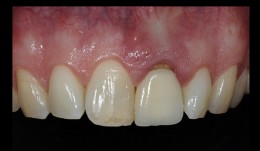

Aesthetic upper anterior implant placement case
Dr. Dominik BüchiDr. Dominik Büchi performed a ridge preservation to keep the soft tissue volume. He then placed an implant 8 weeks later with simultaneous GBR. The final emergence profile was created by a fixed provisional crown. -
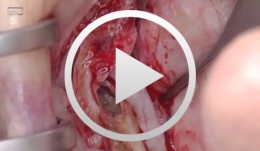

Live surgery Surgical treatment of bone necrosis
Schultze-Mosgau, StefanOutline: - Surgical wound debridement - Sequestrotomy - Preparation of the soft-tissue bed - Plastic, tension-free, saliva-proof wound closure List of materials Basic surgical tool set: - Surgical blade - Preparation scissors - Pair of tweezers - Suture materials -
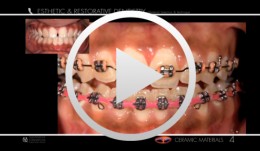

Esthetic and Restorative Dentistry - Ceramic Materials
Terry, Douglas A.
Most Popular
-
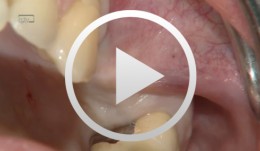

Re-entry at sites 24 and 25
Iglhaut, Gerhard M. -


Optimierung der Ästhetik durch regenerative Maßnahmen in regio 11
Schlee, MarkusGliederung: - Sondierung - Inzision und Mobilisation des Lappens - Präparation des palatinalen Lappens mit Erhaltung des interdentalen Gewebes - Detoxifikation und Konkremententfernung an 11 - Abtragen autogener Knochenspäne aus der spina nasalis - Konditionieren der Wurzeloberfläche mit EDTA-Gel - Applikation von Emdogain und Auffüllen des Knochendefektes - Wundverschluss Inhalt Nach Abschluss der Initialtherapie einer agressiven Parodontitis wird versucht, regenerativ an Zahn 11 eine trichterförmige Tasche zu therapieren. Der Dreh- und Engstand des Zahnes mit seiner Inklination nach bukkal stellte einen begünstigenden äthiologischen Faktor dar. Der kausale Ansatz, diesen Faktor nach Abschluss der Therapie durch eine kieferorthopädische Einordnung des Zahnes zu beseitigen, war von der Patientin nicht gewünscht worden. Folglich limitiert sich die Therapie auf den chirurgischen Regenerationsversuch. Der interdentale Abstand war größer als 3 mm, die Knochentasche weitgehend dreiwandig, so dass die Erfolgschancen als günstig beurteilt werden konnten. Zunächst wird durch das Sounding der Verlauf der Knochenkante definiert. Die exakte Kenntnis der Knochenanatomie in allen drei Dimensionen ist für eine Planung der Inzision unerlässlich. Es wird deutlich, dass es sich um einen knochenbegrenzten trichterförmigen Defekt regio 11 mit guten Chancen auf eine Regeneration handelt. Eine wesentliche Schwierigkeit bei diesem Eingriff besteht in der Notwendigkeit, den Defekt während der Heilung komplett mit Weichgewebe bedeckt zu halten. Dazu wird die ?Papilla Preservation Technique? nach Cortellini angewandt. Nach der Inzision und der Mobilisation der Lappen wird deutlich, dass der Defekt im koronalen Bereich 2-wandig ist. Bukkal fehlt Knochen. Nach der vorliegenden Datenlage in der Literatur ist eine Regeneration mit einem Schmelzmatrixprotein (Emdogain®) alleine in punkto Attachmentgewinn genauso erfolgreich, wie Verfahren, die auf eine Kombination aus Knochentransplantaten und Emdogain setzen. Dennoch wird im vorliegenden Fall eine Kombinationstechnik eingesetzt von der man sich eine bessere Stützung der Papille versprechen kann.In dem vorliegenden Fall werden autogene Knochenspäne aus der Spina Nasalis eingesetzt, die leicht aus dem gleichen Situs mit der Piezotechnik gewonnen werden können. Nach schonender Detoxifikation der Wurzeloberfläche wird diese mit Emdogain behandelt, der Defekt mit autogenen Knochenspänen aufgefüllt und mit mikrochirurgischen Nahttechniken verschlossen. Das Ergebnis nach 6 Monaten mit einer teilweisen Regeneration der Papille wird gezeigt. -
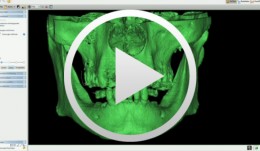

3D planning and template-guided implant insertion in the partially edentulous jaw
Kirsch, Axel / Ackermann, Karl-Ludwig / Neuendorff, GerhardContents: - Planning and preparing a transfer stent - Introduction to on-screen 3D planning - CAD-designed transfer stent - Integrating the CAMLOG® Guide guiding sleeves - Fabricating a therapeutic restoration - Positioning the lab analogs on the master cast using the transfer stent - Titanium bridge frameworks for the temporary restoration - Surgical procedures: implant placement with the transfer template - Hydrocolloid impression taking and bite registration - Temporary insertion of the therapeutic provisional, demonstrating of a passive fit - Definitive CAMLOG abutments - Scanning the abutments, designing the crowns on-screen, machine driven milling of the zirconia crowns, veneering - Preparation for the delivery of the definitive restoration - Connecting the abutments, checking the torque, cementing the crowns, functional checks - Evaluating the completed restoration and assessing the teamwork of the dentist and dental technician
Recommended to You
-
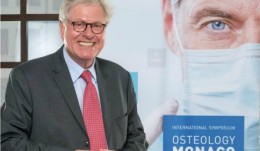

Professor Neukam's programme highlights for Monaco 2016
The preservation of teeth is one of the most important topics for Professor Friedrich W. Neukam at the International Osteology Symposium 2016. We spoke to him in his role as the symposiums chairman on what this implies exactly and what the other important questions are which will be dealt with in Monaco in April 2016. Professor Neukam, the scientific programme of the International Osteology Symposium 2016 in Monaco will be held under the motto Learning the WHY and HOW in regenerative therapy. What are the contents that bring this motto to life? Friedrich Neukam:in our daily practice routines we need to examine all our procedures which we have applied for years - and quite successfully as we believe. The reason being, that our knowledge has changed rapidly within the space of only a few years. That is also one of the objectives of the Osteology Symposium in Monaco 2016: we want to question things and want to give dental practitioners a bench mark by reviewing known techniques in regenerative therapy, while at the same time posing the question of what is the protocol most suited to achieve a predictable treatment objective. Of course, a further objective is to present the current state of knowledge and the latest research results in the regeneration of oral tissue, to discuss these and to demonstrate their clinical implementation for dental practitioners. The programme covers a broad spectrum of topics in oral regeneration. Which are the most important for you? Friedrich Neukam:the long-term success of regenerative measures, be it to preserve teeth or for implants in healthy oral hard and soft tissue conditions. Teeth for a lifetime is a very important subject for me, to achieve the dream of preserving teeth for a lifetime if at all possible, and, of course, this also applies to implants. What are the options that techniques for bone regeneration and soft tissue regeneration offer us here in the various indications, be it in the posterior or the anterior regions - while ensuring a long-term aesthetic outcome. Of particular importance to me, is the question of which decision and treatment avenues we follow if extraction of a tooth proves necessary. Because then there are a number of options available. We need to consider the various treatment options, which is why I am looking forward to the interactive discussion on Decision making after tooth extraction. The discussion round includes experts with many years of clinical experience who will be presenting the use of regenerative techniques for preserving hard and soft tissues. You have just mentioned the topic Teeth for a lifetime. What exactly are the questions relating to this part of the programme? Friedrich Neukam:Well, as already mentioned briefly, I believe it is the wish of everyone to keep their teeth for a lifetime if possible. For me, the questions of periodontal treatment and regenerative therapy options are at the forefront here. However, what I truly look forward to, is how the HOW will be presented. For me this also means that one must receive clear information on when these measures are not effective, and I think that a crucial question will be answered: which is, when do we need to extract teeth in order to enable other treatment, such as regenerative techniques but also implant restorations in the local tissues. A major poster exhibition will also be held as part of the Osteology Monaco event, together with the Research Forum where current research results will be presented. What, in your opinion, are the most important topics which have so far been covered in research? Friedrich Neukam:if we look at the regenerative options available today, then pre-clinical research results, and of course, also clinical studies, relating to bone preservation after tooth extraction as well as the preservation and reconstruction of the soft tissue are of prime importance to me as they have a major influence on our clinical treatment modalities. If your colleagues ask you why they should participate in next years Osteology Monaco, what would you tell them? Friedrich Neukam:first of all I would not focus on the casino in Monaco, but rather I believe, that the Osteology Foundation and the international Osteology Symposium in Monaco have become the standard - a standard worldwide for regenerative measures in the oral cavity. This is where experts from across the globe meet to take positions on current topics, research results as well as clinical questions. In other words, this is a highly attractive forum with a programme which is also devoted to entirely practical aspects, namely, the WHY and the HOW in regenerative therapy. Thank you for the interview Professor Neukam. More information and registration on www.osteology-monaco.org #OsteologyMonaco -
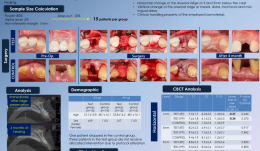

A RANDOMISED CLINICAL TRIAL FOR RIDGE PRESERVATION USING TWO TYPES OF COLLAGENATED XENOGRAFT/COLLAGEN MEMBRANE—A CONE-BEAM CT STUDY
Objectives: This randomised controlled clinical trial aimed to radiographically compare horizontal and vertical alteration of alveolar ridge following extraction-socket grafting with different combinations of biomaterials: collagenated porcine bone and cross-linked collagen membrane (test group) versus collagenated bovine bone and non-cross-linked collagen membrane (control group). Methods: This study included patients who required at least one anterior or premolar extraction, were aged 20 years old or more, and were able to understand the informed consent. Tooth replacement was planned using either conventional or implant-supported fixed partial dentures. Sample size calculations required 13 patients per group to obtain 80% power at a two-sided alpha level of 0.05%. A total of 30 patients were enrolled, and 15 were randomly allocated to each group. All were blinded to their allocations. Following a single tooth extraction, a collagenated bone substitute was used to fill in the socket, and a collagen membrane was used to cover it. Primary flap closure with several flap designs was attempted. Cone-beam CT (CBCT) scanning was carried out to assess the change in alveolar ridge, once immediately after ridge preservation and once after 4 months of healing. The primary outcome was horizontal alteration of alveolar ridge. Secondary outcomes were vertical alteration of alveolar ridge and clinical handling of the bone substitute and barrier membrane. Results: One patient in the control group dropped out and 3 patients did not receive the allocated intervention in the test group. Intention-to-treat (ITT; control group 14, test group 15) and per protocol (PP; control group 14, test group 12) analyses were performed. In the control and test group, 8 and 7 cases, respectively, showed membrane exposure, secondary healing was uneventful in all cases. There was no statistical difference in ITT and PP analysis between the groups in horizontal alteration of alveolar ridge width, but vertical height in the midfacial area was significantly reduced in the test group. The handling properties of the barrier membrane showed no statistically differences, but the handling properties of the bone substitute was significantly superior in the control group. Conclusions: Ridge preservation using collagenated porcine bone/cross-linked collagen membrane showed similar horizontal ridge alteration to collagenated bovine bone/non-cross-linked collagen membrane. However, vertical ridge changes were more pronounced with the collagenated porcine bone/cross-linked collagen membrane. Further studies including histometric evaluation are required. -

THE OSTEOLOGY FOUNDATION 2016
The Osteology Foundation’s motto is „Linking Science with Practice in Regeneration“. The foundation was established in 2003 and its core activities include funding of research projects and organisation of national and international symposia throughout the world. In recent years, the Foundation has expanded its focus. Today, it also offers courses and textbooks specifically for researchers, as well as the online platform THE BOX, which connects practitioners and scientists in the field of oral tissue regeneration worldwide, and provides tools and information. www.osteology.org











